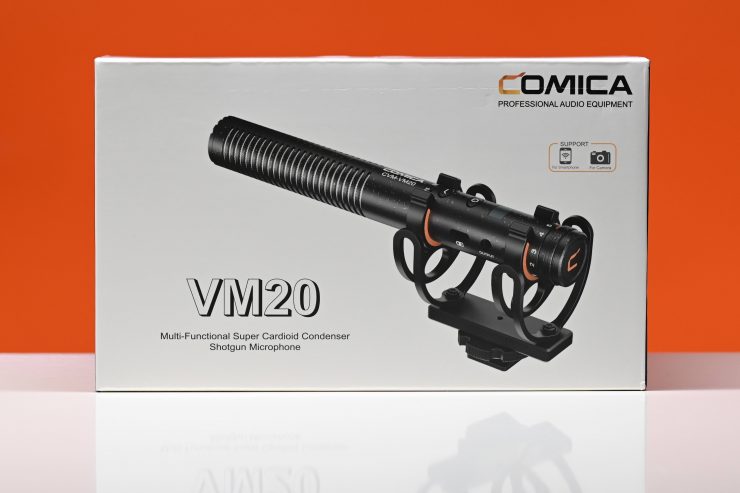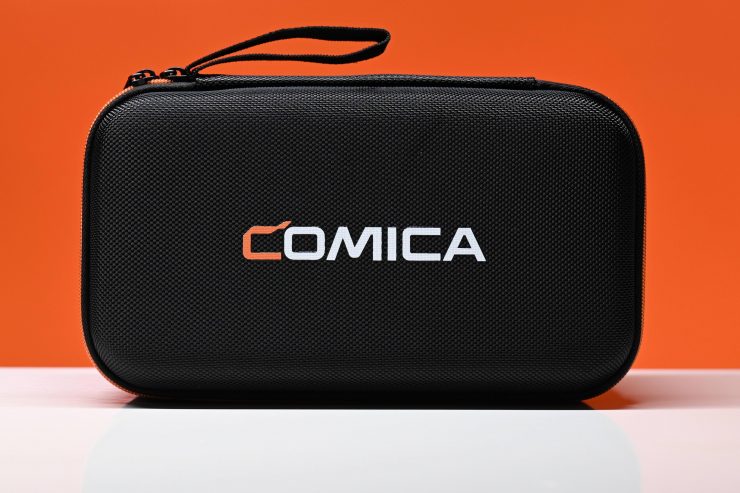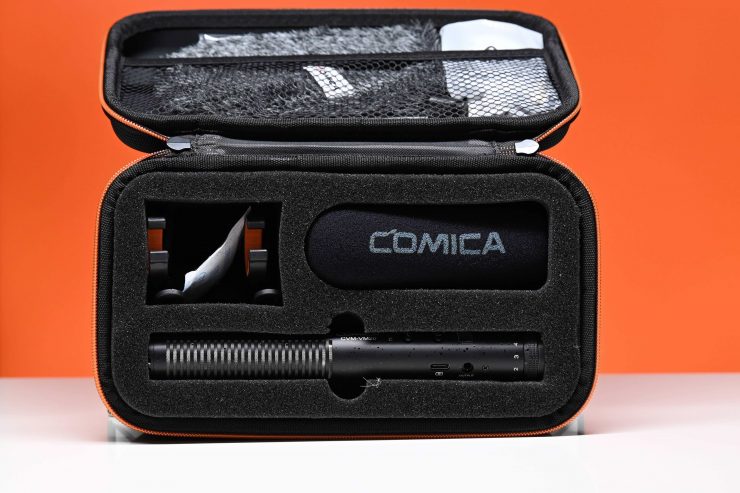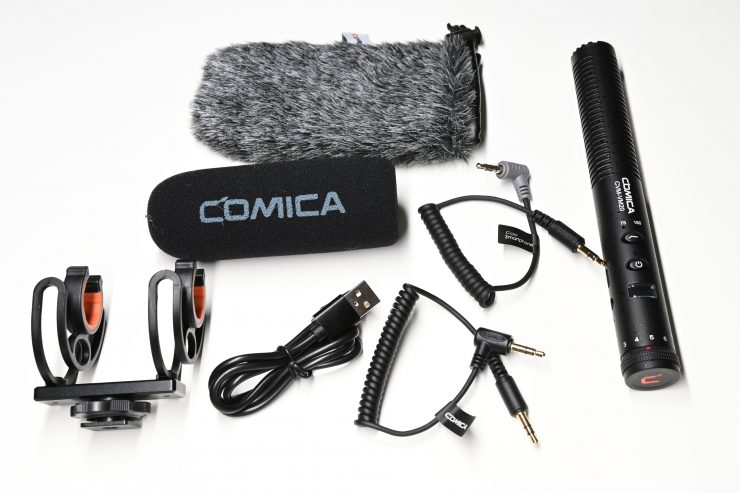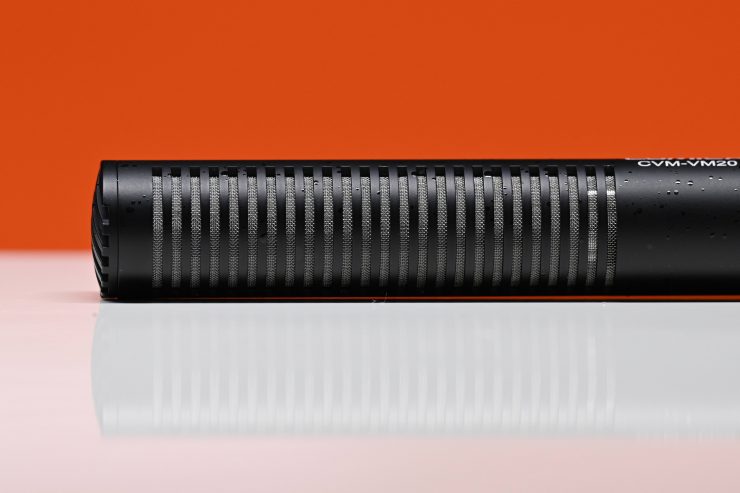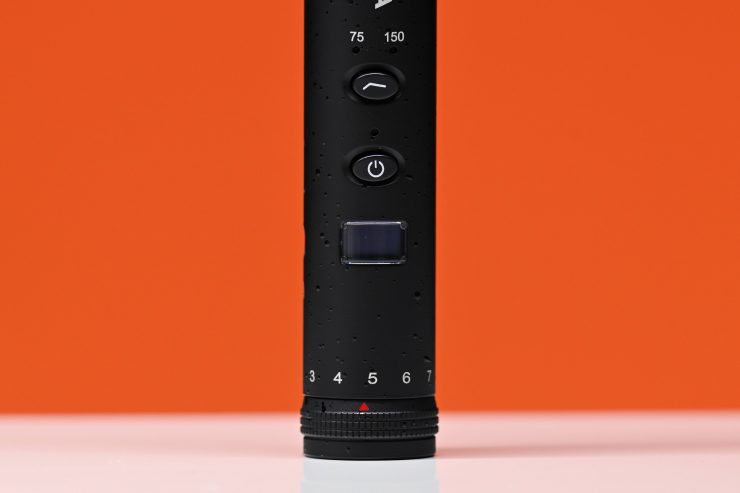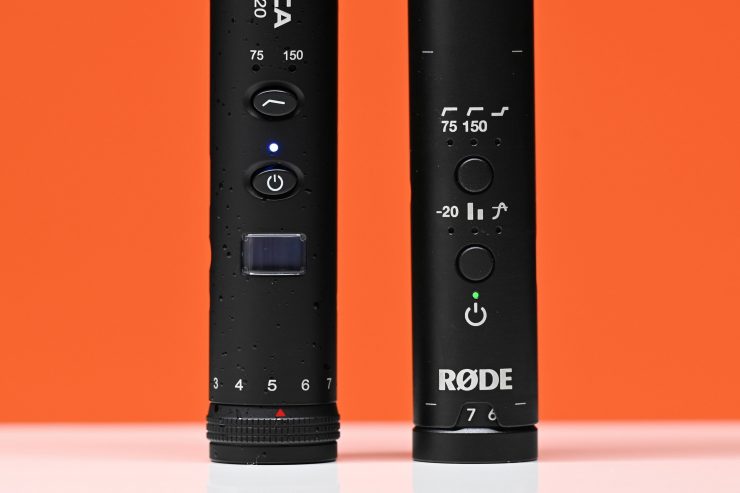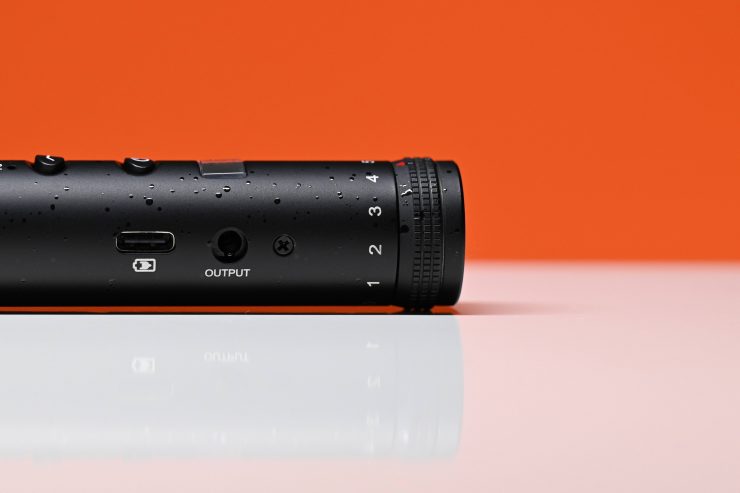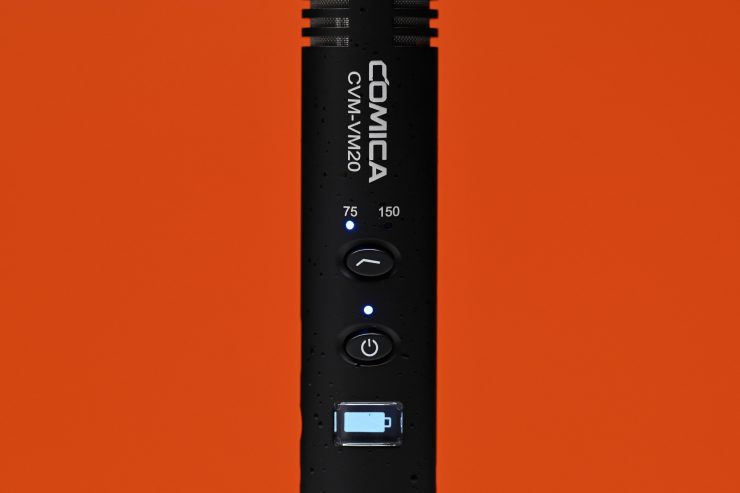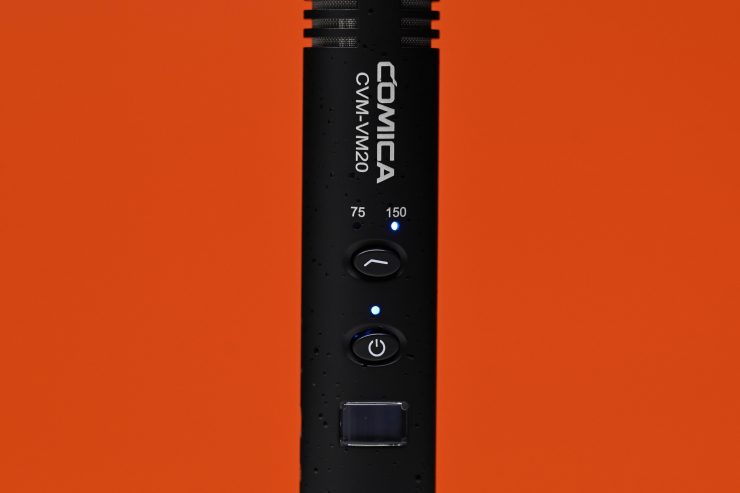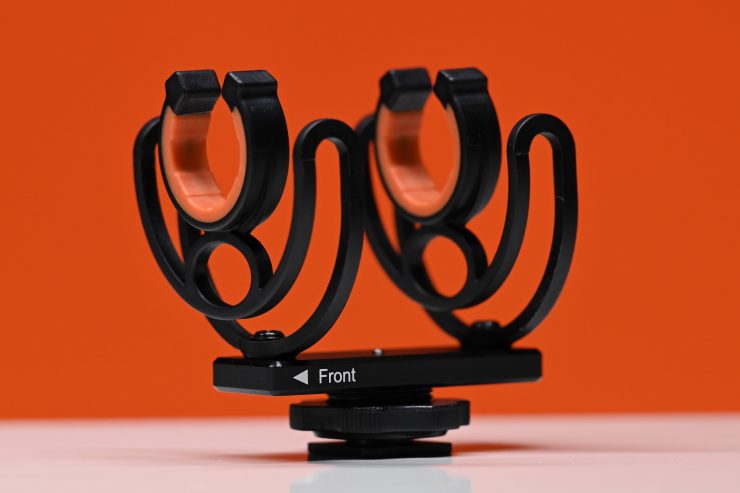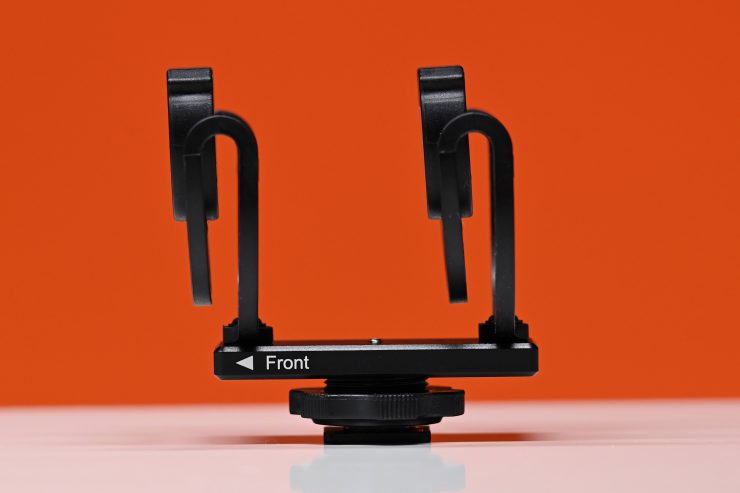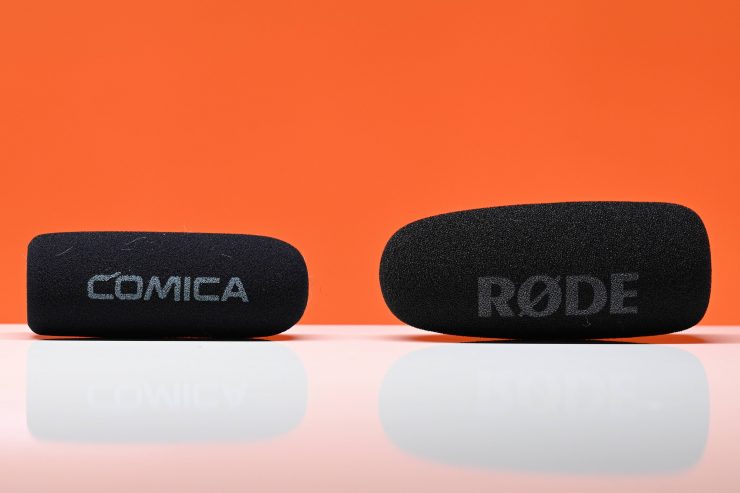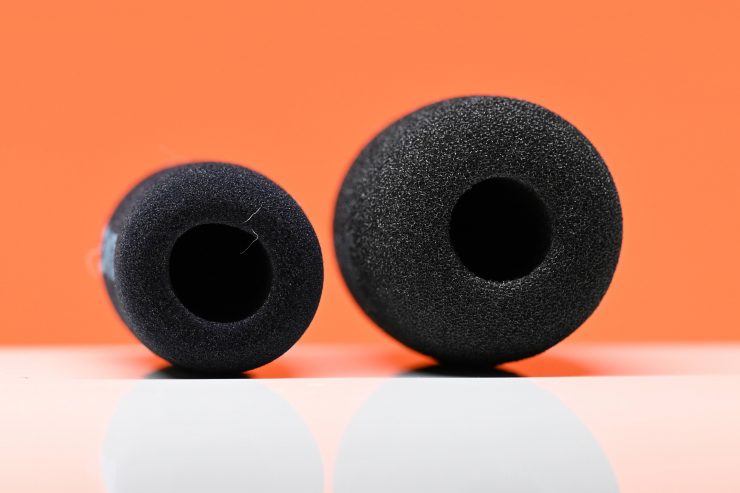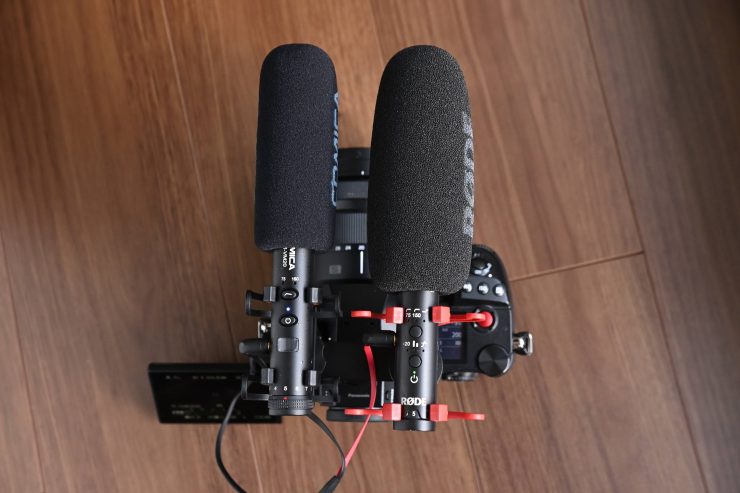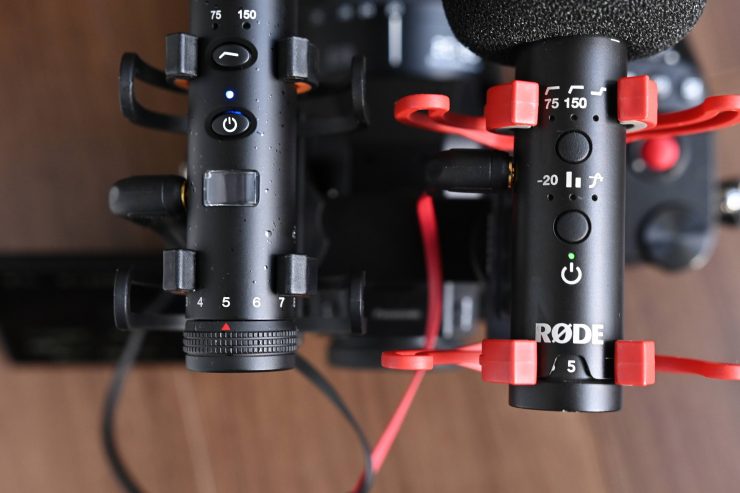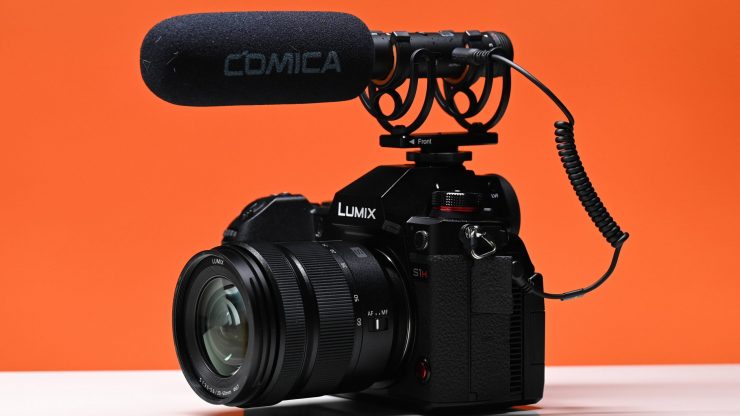
The Comica CVM-VM20 Shotgun Microphone is a super-cardioid condenser mic, with two low-cut filter modes, an OLED screen, and a built-in battery. It looks like a good option for DSLR and mirrorless cameras, Vlogging, and podcasts.
Key features
- Two Low-cut Filter Modes
- Adjustable Stepless Gain Control
- OLED Screen
- USB-C Rechargeable Built-in Lithium Battery, Support Working while Charging
- Full Metal Material Construction, Good Shielding
Swiss Army Knife microphones
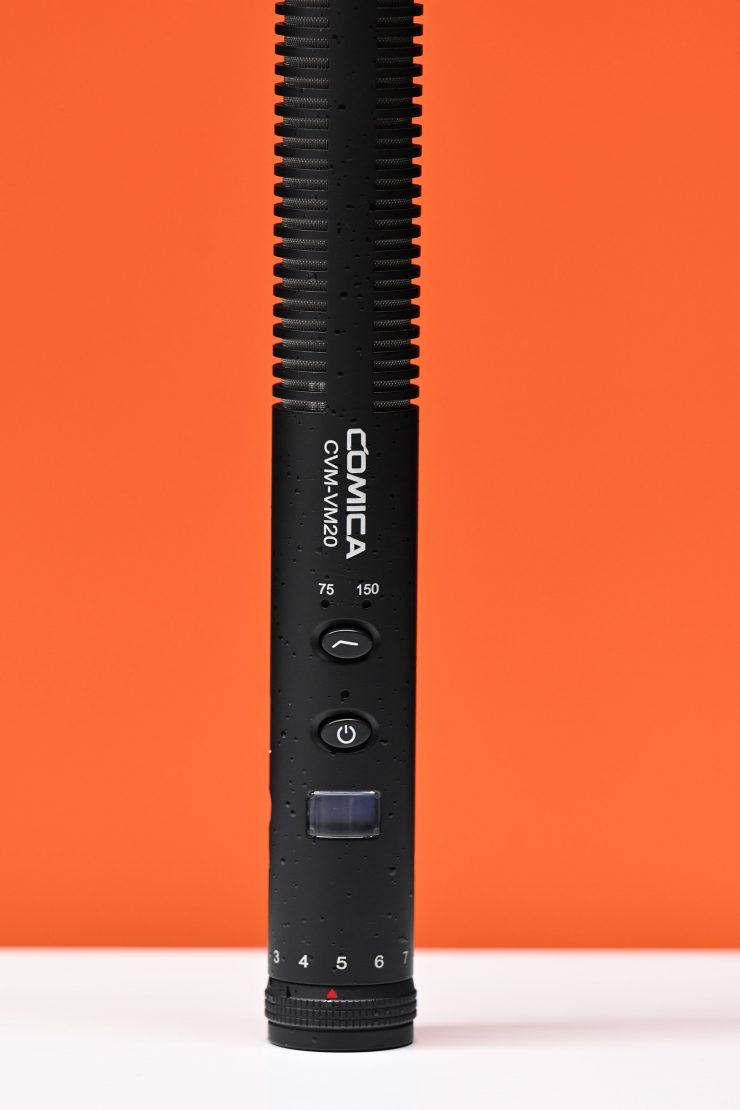
On the surface the Comica CVM-VM20 Shotgun Microphone appears to be quite similar to the RØDE VideoMic NTG. The concept and feature set, while not identical, is fairly similar between both microphones. Although the RØDE VideoMic NTG is more versatile.
In the last few years, we have seen manufacturers start to make products that are multi versatile and can be used for a wide range of applications. Consumers are getting smarter, and with so much competition it has become harder to sell products that just do one thing.
What do you get?
The Comica CVM-VM20 comes with the following:
- CVM-VM20 Microphone
- Shock Mount
- Wind Jammer
- Wind Muff
- 3.5mm TRS-TRS audio cable
- 3.5mm TRS-TRRS audio cable
- USB-C to USB charging cable
- Carry Case
- User Manual
Size & Weight
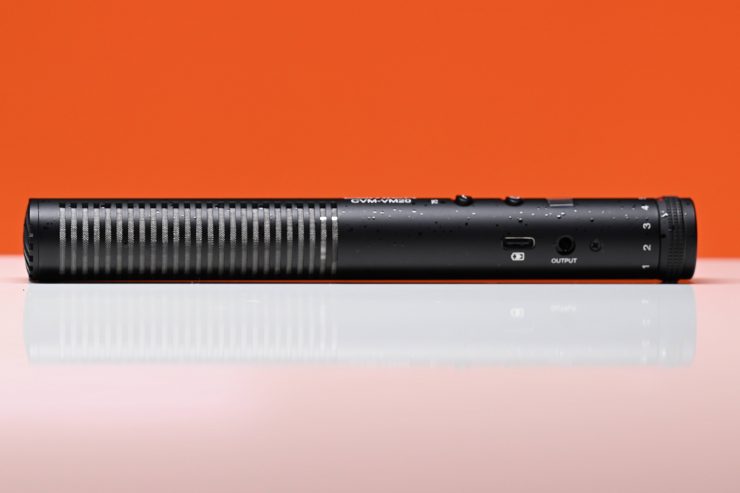
The Comica CVM-VM20 Shotgun Microphone is listed at weighing 84g, but I independently weighed it at 91g
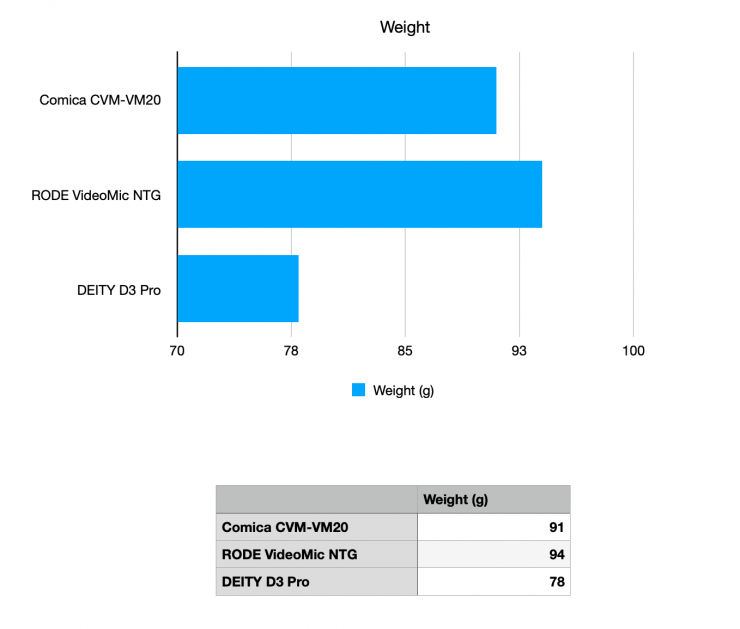
Above you can see how this weight compares to the RØDE VideoMic NTG and DEITY D3 Pro. Please note these weights are just for the microphone and they don’t include the mount, etc.
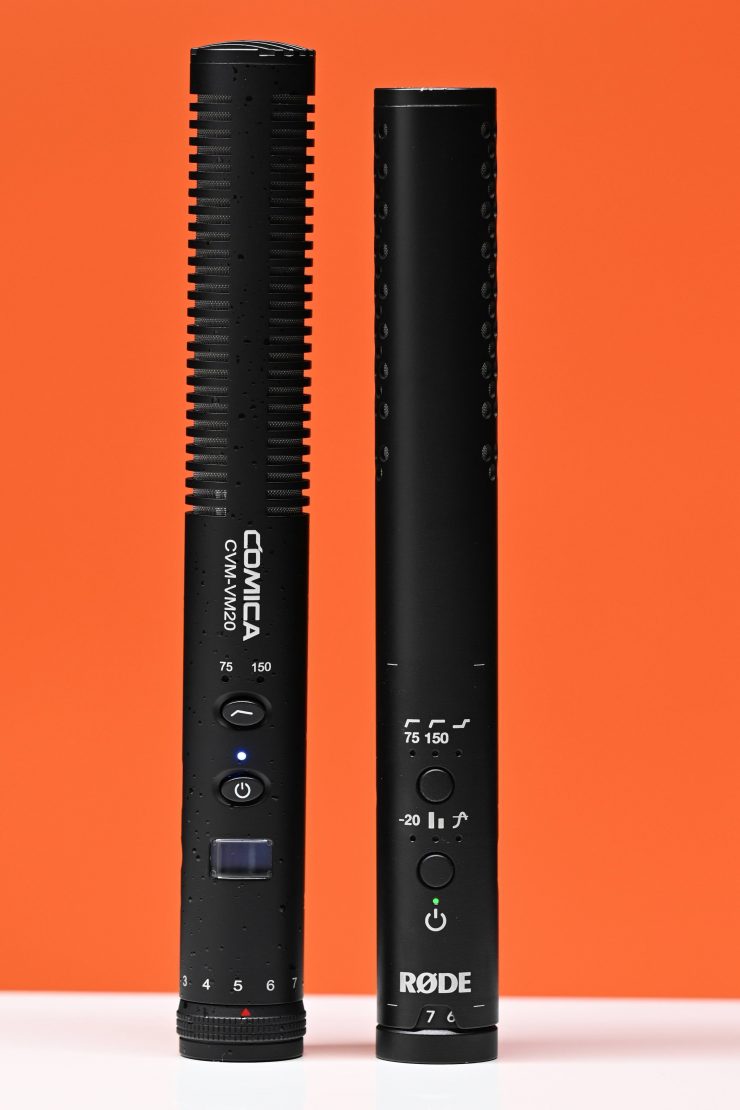
The Comica is a little longer than the RØDE, but weight wise they feel very similar.
Build Quality
The build quality of the Comica CVM-VM20 is reasonably good. It is constructed out of a metal material that Comica claims can shield external signal interference.
The physical buttons on the CVM-VM20 are nice and tactile and I found them nicer than the buttons found on the RØDE VideoMic NTG.
However, the rotating gain adjustment knob is too easy to move which makes it more susceptible to being accidentally knocked during use. The rotating gain adjustment knob on the RØDE VideoMic NTG is far better to use and easier to see.
Two Low-cut Filter Modes
The CVM-VM20 has two low-cut filter modes, 75 & 150Hz. These two low cut filter modes can effectively filter out the low-frequency noise according to different operating conditions.
There is a simple button on the microphone that you press to activate these low-cut filters. A blue LED indicates which one has been selected. If the blue LED is off the no low-cut filter has been selected.
Adjustable Stepless Gain Control
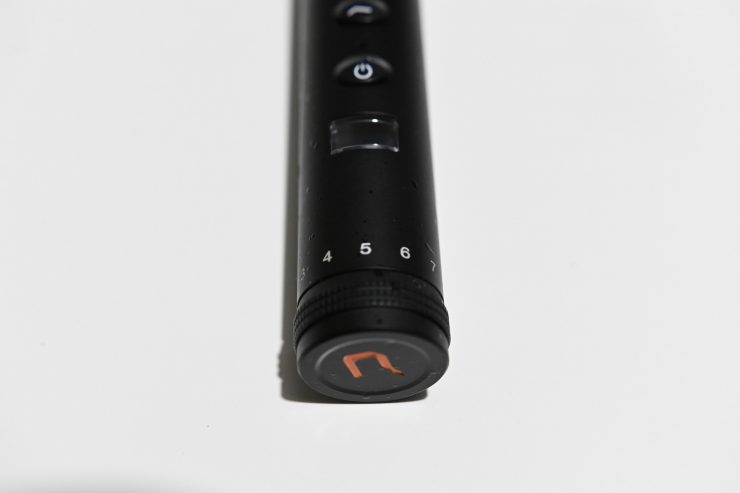
Comica 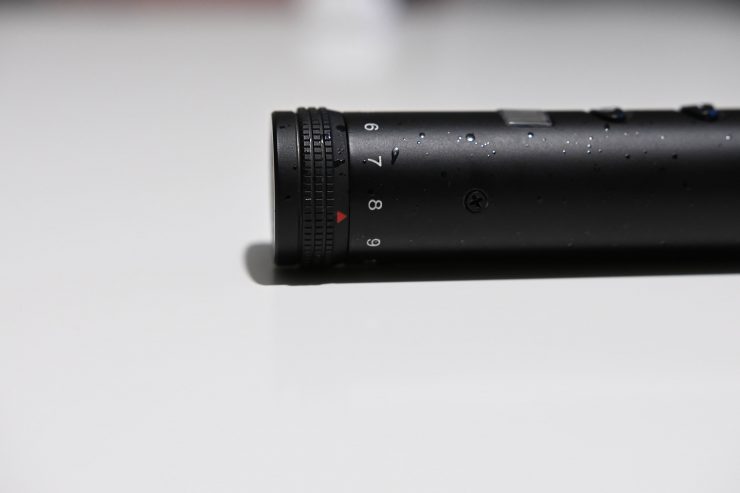
Comica 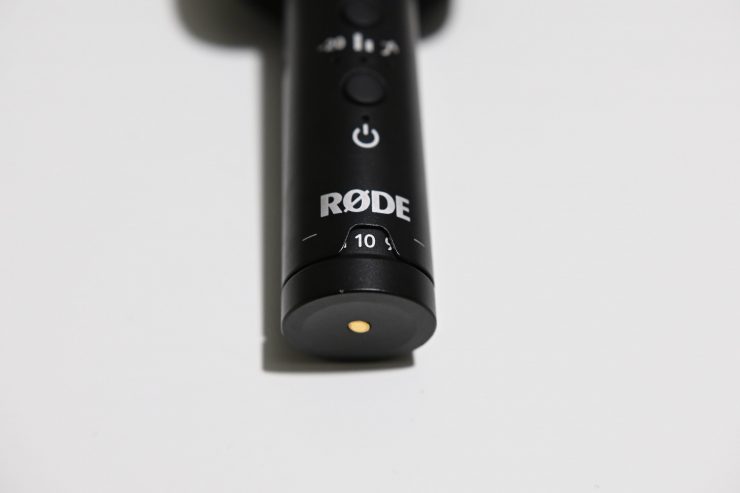
RODE 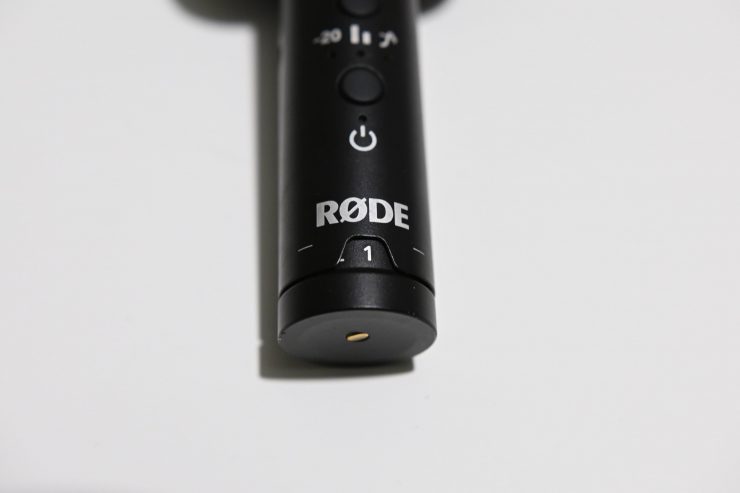
RODE
There is an adjustable step-less gain control that lets you change the output level of the microphone. This goes from 0-10. The trouble is, unlike the version on the RØDE VideoMic NTG where the level you select is always shown on the top of the microphone, on the Comica you can only see when 3-6 is selected. With any other values you set, the red indicator can’t be seen.
This is a design flaw in my opinion and something that hasn’t been thought out.
OLED Display
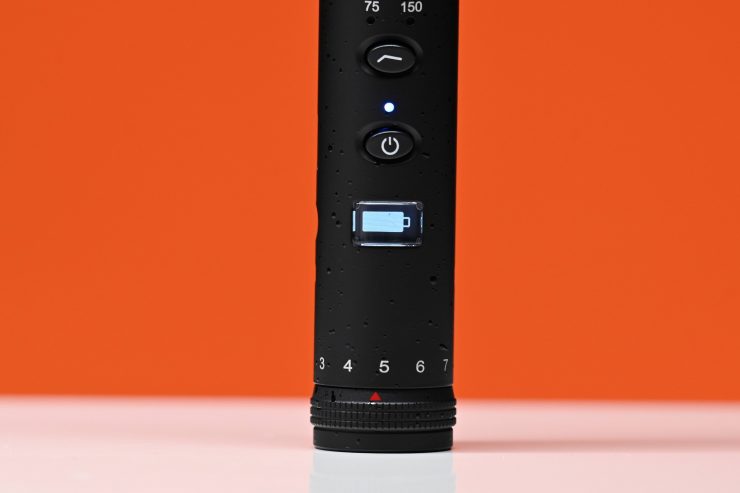
There is an OLED display on the CVM-VM20 but all it does is to show you a battery indicator. I can’t complain though, because the RØDE VideoMic NTG doesn’t have a battery indicator, it just has a single LED light that changes colors depending on the battery life.
USB-C Interface
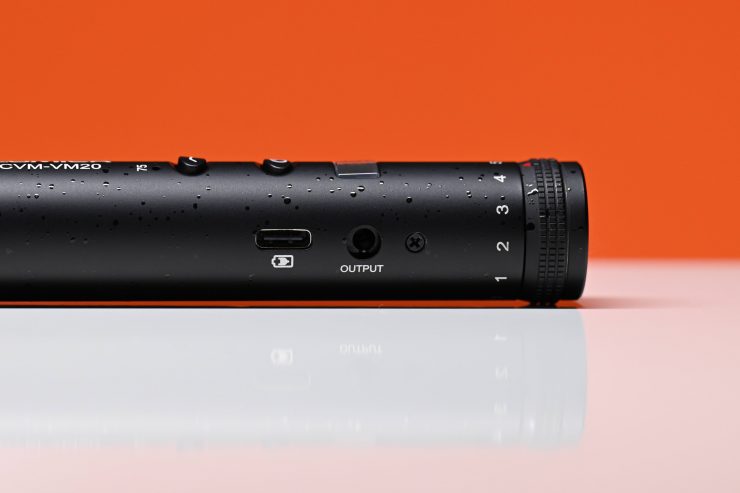
The microphone has a USB-C interface, however, it can only be used for charging the built-in lithium-ion battery. You can charge and operate the microphone at the same time which is nice.
The RØDE VideoMic NTG lets you output an audio signal through the USB-C, which makes it easy to use as a microphone for your computer. You can also use the headphone output for audio monitoring while using the USB output. Neither of these things is possible to do with the Comica.
Connectivity Cables
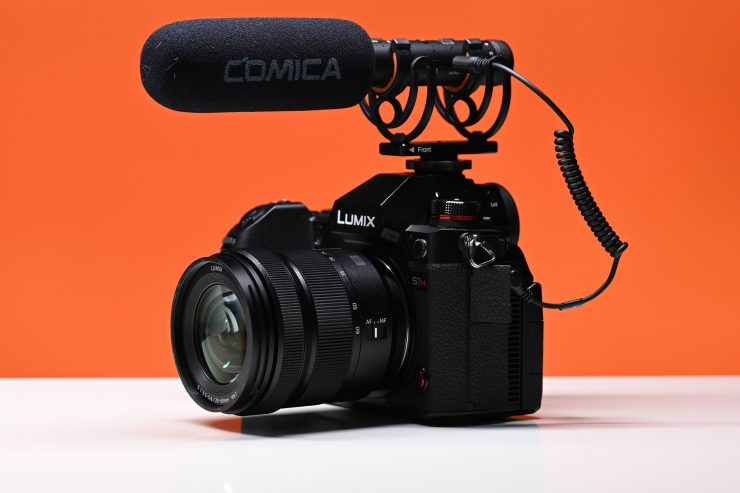
As I already mentioned, the CVM-VM20 comes with 3.5mm TRS and 3.5mm TRRS cables. This lets you use the microphone with DSLR/Mirrorless cameras, smartphones, audio recorders, tablets, and some laptops.
Specifications
- Polar Pattern: Super-Cardioid
- Frequency Response: 20Hz ~ 20KHz
- Low-cut: 75Hz / 150Hz
- Sensitivity Range: -43dB ~ -23dB
- S/N: >75dB
- Maximum SPL: >105dB
- Output Form: 3.5mm TRRS
- Power: Li-ion Battery 3.7V 300mAh
- Size: Φ22mm x L 177mm
- Net Weight: 84g
Performance
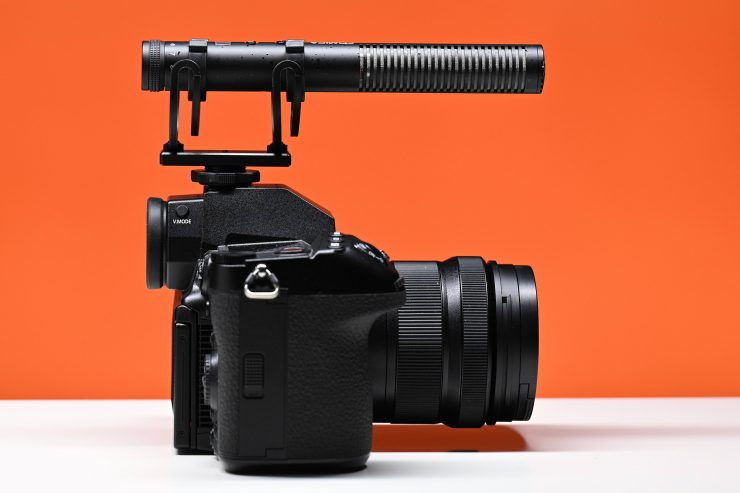
The Comica uses asuper-cardioid polar pattern and a variable gain control, that allows the user to precisely adjust the mic’s output. The microphone can deliver anything from a mic level signal all the way to a headphone level output.
| Comica CVM-VM20 | RØDE VideoMic NTG | DEITY D3 Pro | |
| Pick-Up Pattern | super-cardioid polar pattern | super-cardioid polar pattern | super-cardioid polar pattern |
| Frequency Range | 20Hz ~ 20KHz | 20Hz ~ 20KHz | 50 Hz to 20 kHz |
| Sensitivity Range | 43dB ~ -23dB | -26 dB re 1V/Pa (50mV @ 94dB SPL) ± 1dB @ 1kHz | -24 dBV/Pa at 1 kHz |
| S/N | >75dB | 79 dBA | 84 dB |
| Maximum SPL | >105dB | 105dB SPL | 130 dB SPL (1 kHz, 1% THD, 1-Kilohm Load) |
It is no real surprise that the Comica CVM-VM20 has the same pick-up pattern as its competition.
No Safety Track
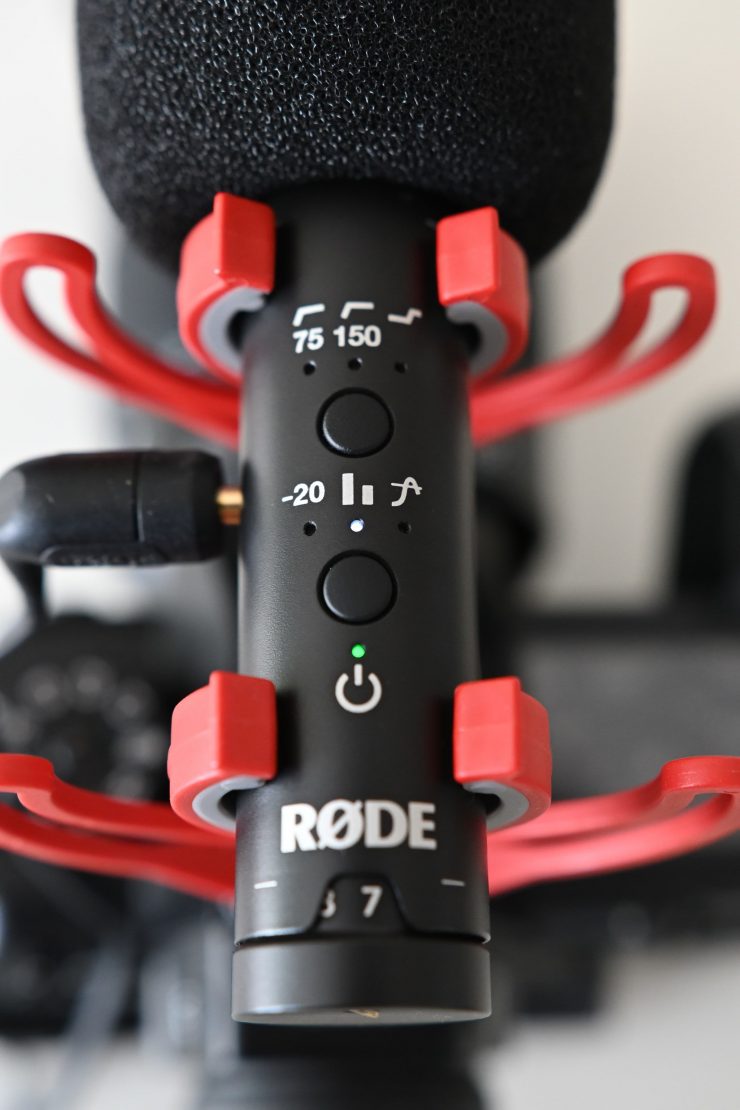
Unlike the RØDE VideoMic NTG which gives you the ability to record a second track at -20db, the Comica has no such feature.
In loud environments or newsgathering where sudden noises can occur, this can make the difference between having usable audio instead of audio that is distorted and clipped.
Battery
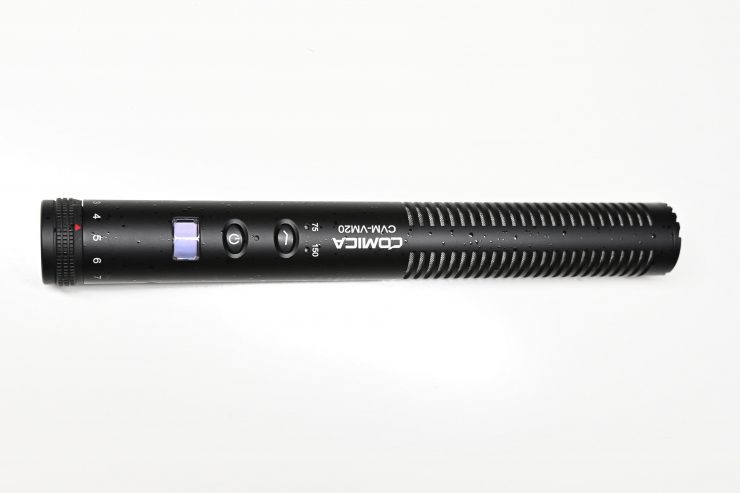
The microphone has an In-built rechargeable lithium-ion battery that is claimed to provide up 60 hours of recording. I didn’t leave the mic on for 60 hours to test this, but it easily lasts for a couple of days without needing to be recharged.
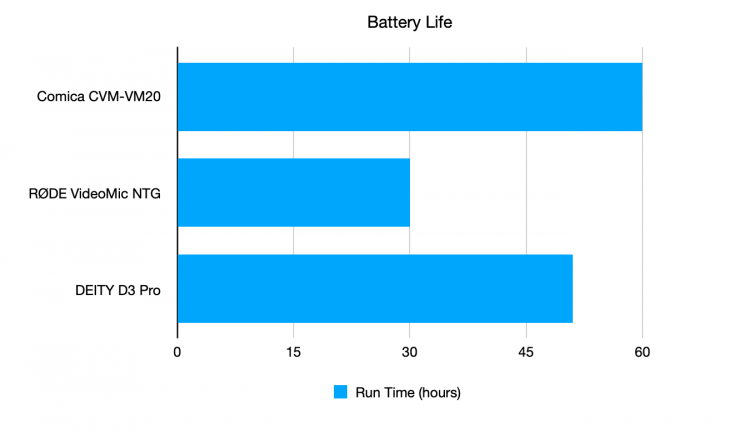
So how does the battery life compare against the RØDE VideoMic NTG and DEITY D3 Pro? Well, above you can see.
Comica doesn’t list how long the battery takes to fully recharge.
RF Interference
Some microphones have pretty bad shielding and can be susceptible to RF interference. Here in Tokyo, I have had instances where microphones I was using were picking up radio stations and I had to switch to something else.
I haven’t noticed any shielding problems so far with this microphone, but I can’t say for sure that you will 100% not get any RF interference.
Shock mounting system
The Comica CVM-VM120 comes with its own shock mounting system. This isn’t a Rycote Lyre shock mounting system that you get with the RØDE VideoMic NTG or DEITY D3 Pro.
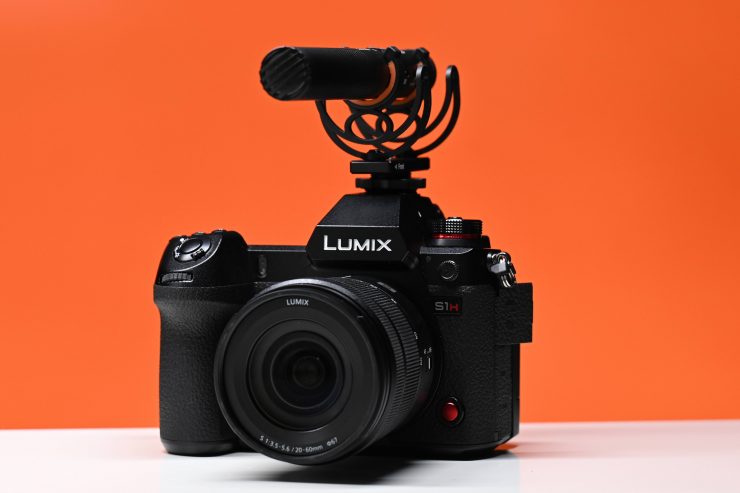
It does work reasonably well and it is quite sturdy, but it doesn’t have as much suspension movement as a Rycote.
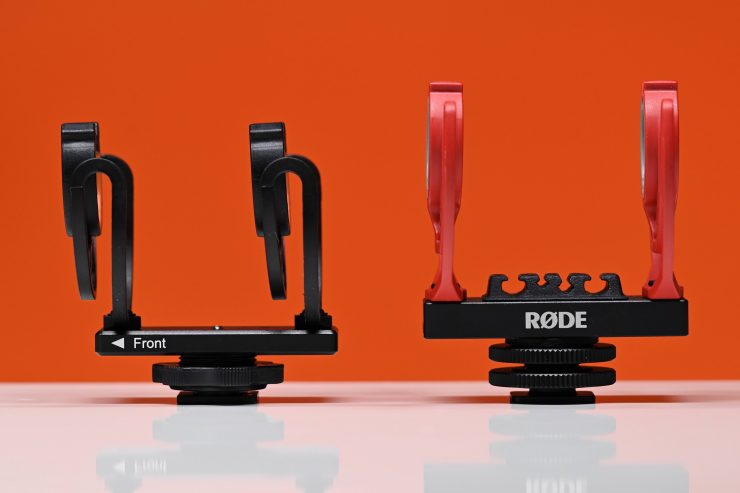
On the RØDE VideoMic NTG you can slide the cold shoe adapter along a rail to best position the microphone. The sliding rail mount is great because if you are using the microphone on a smaller camera and you have it attached to the cold shoe connector, you can get it out of the way of the eyepiece when you are shooting. Conversely, if you are using a very wide-angle lens you can slide the microphone back so it won’t be in shot.
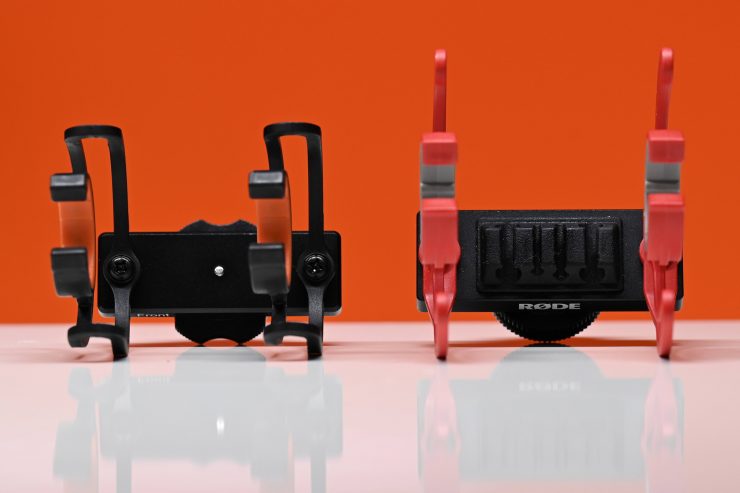
The RØDE also features nice cable management slots for keeping everything nice and tidy.
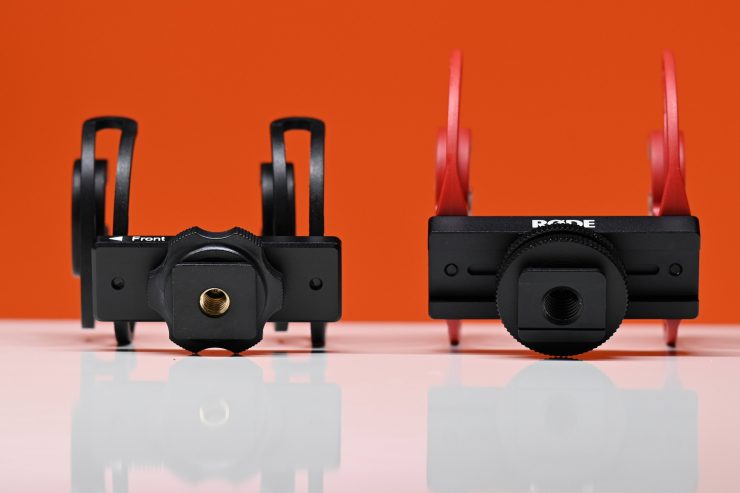
Another great feature on the VideoMic NTG is that on the bottom of the cold shoe mount there is a 3/8″ receptor so you can screw it directly onto a boom pole. On the Comica it is only a 1/4 20″ receptor.
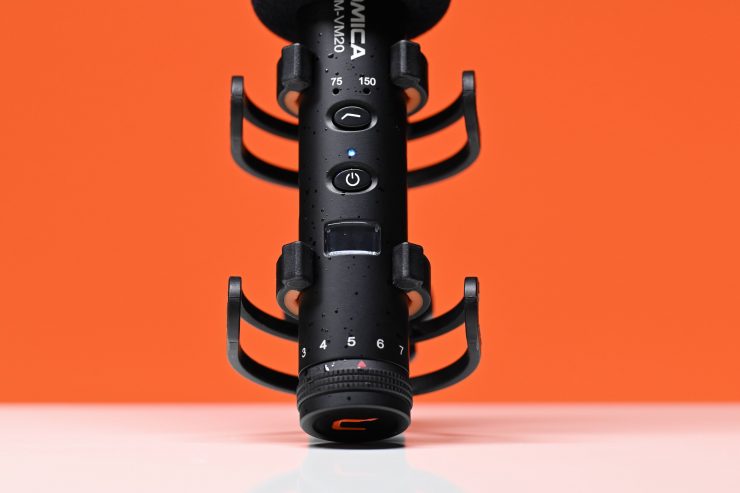
While the system on the Comica isn’t nearly as full-featured as what you get with the RØDE it still does the job.
Wind Jammer
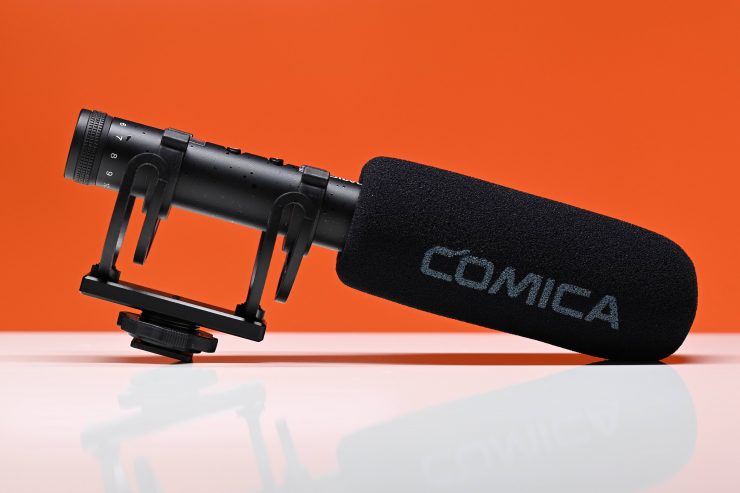
The Comica CVM-VM20 comes with two wind jammers. The first is just a simple foam covering.
This isn’t very thick and it doesn’t stop the wind as much as the one that comes with the VideoMic NTG.
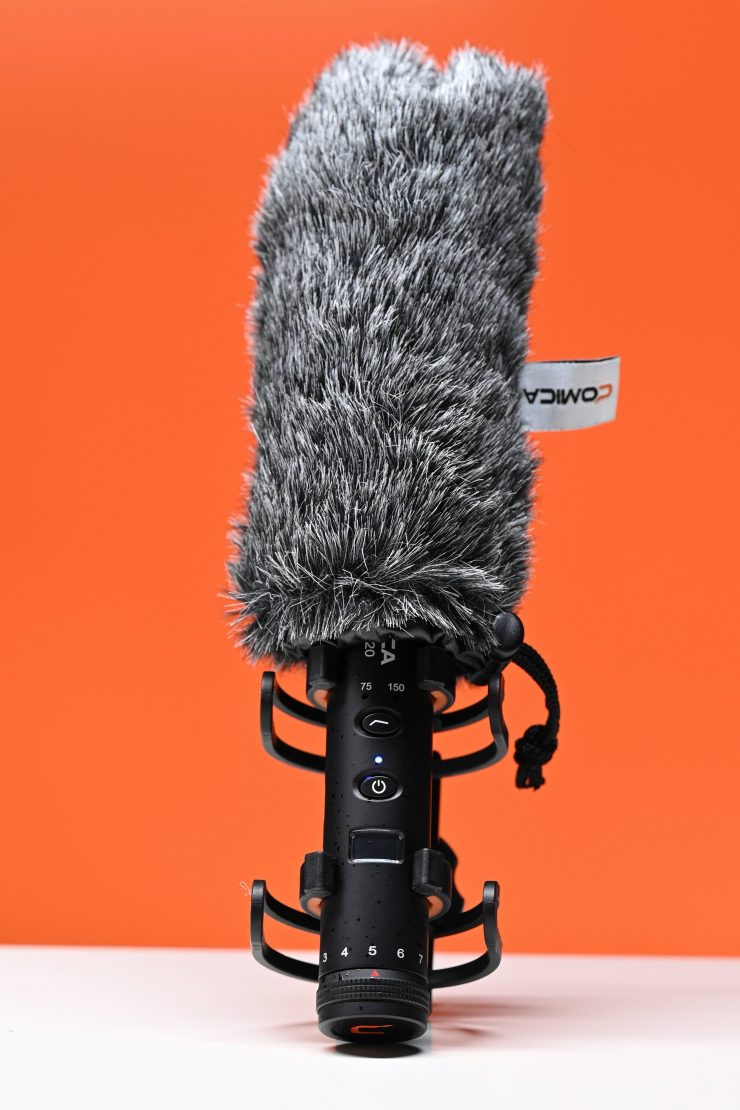
The second wind jammer that comes with the microphone actually fits over the top of the foam wind jammer. This is a nice inclusion and it certainly makes a difference when you are using the microphone outdoors. The VideoMic NTG doesn’t come with a wind jammer like this as standard.
Real-World Performance
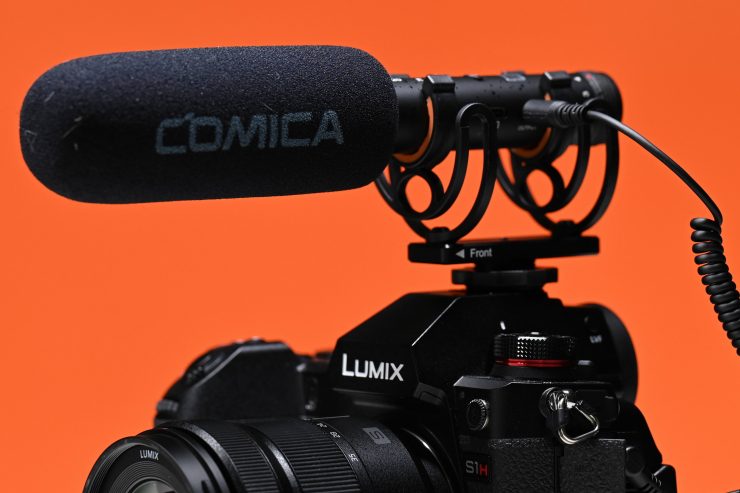
I was interested to see how the Comica CVM-VM20 compared to a RØDE VideoMic NTG.
In the above test that you can listen to I have compared the VideoMic NTG directly against the CVM-VM20. For the test, I put both microphones directly into the Panasonic S1H. Both microphones were tested in the exact same place at the exact same distance. The only thing I have changed was the output gain level on the microphones to achieve the same exact recording levels in the Panasonic S1H.
I’ll leave it up to you to decide which one you prefer the sound of. I thought the Comica sounded pretty good considering its price. I do prefer the sound of the RØDE as I personally think it sounds a little fuller and richer.
I also did another comparison where I set the output gain on both microphones to the exact same level, in this case, 5, to see what the differences were. I did this by mounting both microphones on the S1H and outputting both of their audio signals through a stereo splitter cable to the Panasonic S1H.
Above you can listen to the results. I was quite surprised to see that the Comica output levels, when set on 5, were significantly higher than those of the VideoMic NTG.
As the Comica VM20 doesn’t have any ability to set the output gain to -20db the high output levels could be a problem in noisy environments.
Now, these may seem like an unfair test as the RØDE costs almost twice as much as the Comica, but it gives you an idea of how the two microphones stack up when it comes to audio quality.
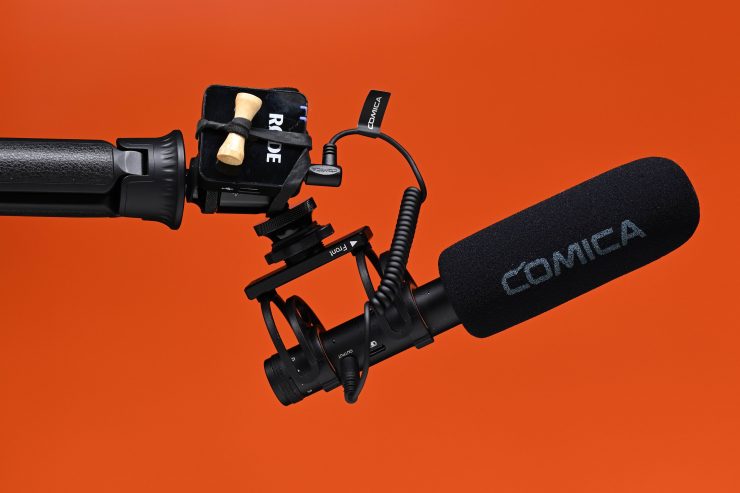
One of the other nice options is to couple this mic together with the RØDE GO or a similar system from another brand if you want to create a low-cost wireless booming or handheld microphone solution.
Above you can hear a comparison between the Comica CVM-VM20 and the RØDE VideoMic NTG when outputting an audio signal to a RØDE Wireless GO.
If you are doing a sit-down interview you could very well use the Comica with a RØDE Wireless GO on a boom arm. You can’t really just run out an audio cable because the microphone has an unbalanced output and not a balanced output. If you are on a budget, then the Comica VM20 and a RØDE Wireless GO might make for a good lowe cost audio solution.
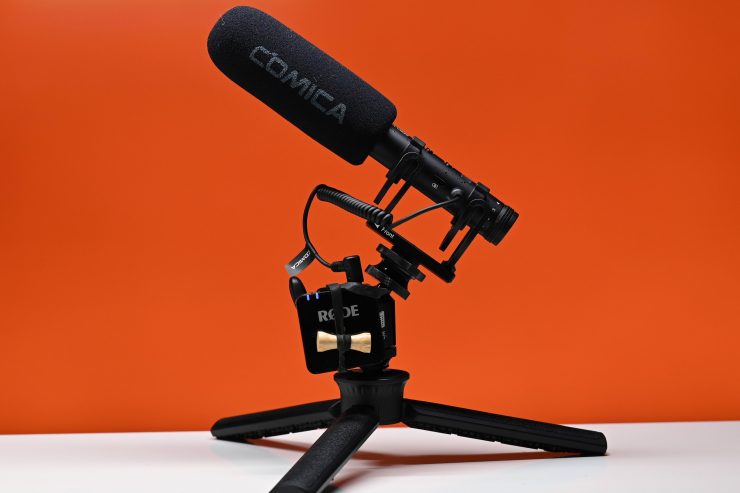
You can also place the microphone on a mini stand if you use a different support mount.
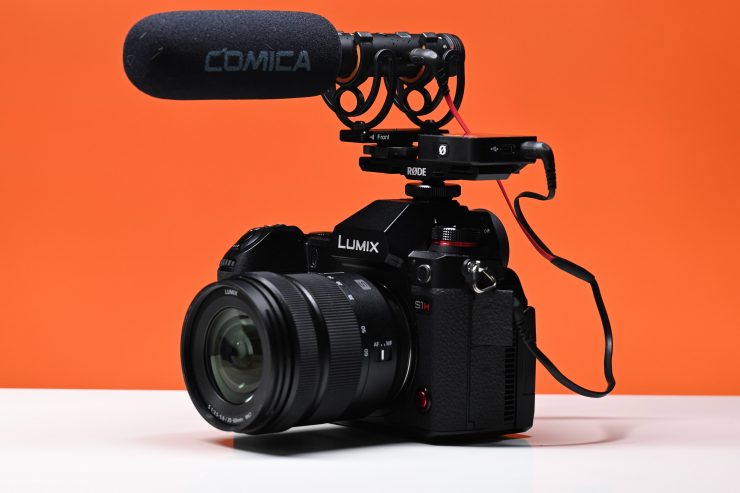
I like being able to use my microphones for different applications. If you are a one-man-band you can take the same microphone you are using on camera and then place it on a stand and plug in a RØDE GO Wireless TX. This makes for a very cost-effective solution. In saying that, I personally think the microphone sounds a lot better when it is being used from above rather than having it face up.
As I have already mentioned, it is the versatility of the microphone that is undoubtedly its biggest selling point. Being able to use it for so many applications makes it a very useful audio product to have in your kit. In saying that, it really needs to have a USB audio out to compete against microphones like the RØDE VideoMic NTG.
What’s Missing?
Despite the Comica CVM-VM20 Shotgun Microphone having a host of features, it is missing a few things:
- The battery isn’t user-replaceable, which may shorten the lifespan of the product.
- No ability to use the microphone as a USB mic source
- There is no balanced output. Maybe I’m being a little picky here, but it would have been nice if the microphone had one. As the output via the 3.5mm jack is unbalanced if you want to do longer cable runs you may end up getting interference.
- No XLR output. If you want to use the microphone with a professional camera or audio mixer you would have to use an adapter. It would have been nice to see Comica include a cable with an XLR plug.
Price
The Comica CVM-VM20 retails for $129 USD.
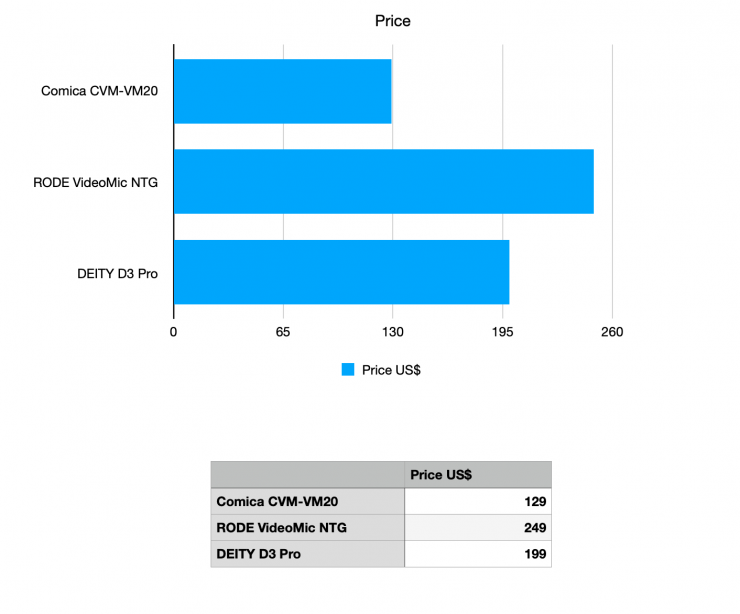
So how does this compare to some of the competition? Well, above you can see.
Competition
Direct competition comes in the form of the RØDE VideoMic NTG and the DEITY D3 Pro. The DEITY D3 Pro was introduced about a year before RØDE bought out its VideoMic NTG. The Comica CVM-VM20 Shotgun Microphone is bound to draw comments that it looks like a copy of the VideoMic NTG and the DEITY D3 Pro. That is certainly valid criticism.
I have previously reviewed the RØDE VideoMic NTG and you can read that review here. So, I’ll primarily tell you what the DEITY offers.
The D3 Pro microphone features a microprocessor that reads the plug/connector on your camera, tablet, laptop, bodypack transmitter or cellphone and automatically adapts itself to meet the device’s needs. That means you no longer have to carry around a lot of different adapter cables with your microphone. This makes it easier to use with whatever device you happen to own.
DEITY also has a different take on adding +20dB of gain. Unlike some other microphones that use a simple 1 or 2 position toggle switch, the V-Mic D3 Pro uses an adjustable knob so you can dial in exactly how much gain you need. In some ways, it’s almost like having an audio mixer built into the microphone.
The D3 Pro is USB rechargeable and offers a claimed run time of greater than 50 hours. The microphone will go into standby mode when you are changing batteries in your DSLR and the D3 Pro will turn itself off after 15 minutes in standby. This is a really nice feature because it means the batteries won’t go flat in your microphone if you forgot to turn it off. So many of today’s on-camera microphones, especially for DSLR and mirrorless cameras don’t feature this function. The regular D3 can be in standby mode for a whopping 6000 hours (250 days!).
Inside each microphone is a 14mm pre-polarized capsule that offers a flat natural frequency response. Unlike other microphones on the market that have a pronounced bass boost that ends up mudding the sound, Deity claims that the D3 Pro offers the user a very realistic representation of sounds as they originally occurred.
Deity Microphones partnered with Rycote to co-engineer the included cold-shoe shock mount. These shock mounts feature real Rycote Lyre suspensions, the exact same ones used on boom poles, so your microphones won’t pick up handling noise that may come from your camera. It also means the D3 Pro can come out of their shock mount and be used with other shock mounts if needed. The RØDE VideoMic Pro also features a Rycote suspension system. This is something you won’t find on the Comica.
The main advantage the D3 Pro has over the VideoMic NTG is that it has a balanced output which makes it a better option if you want to use it as a wired connection on a boom.
Just to be clear with our readers, I have never used the DEITY D3 Pro, so I can’t say how it compares against the VideoMic NTG and the Comica CVM-VM20 when it comes to sound quality.
The RØDE VideoMic NTG has the ability to be used as a USB microphone, and you can record a second track at -20db, this is something the DEITY D3 Pro can’t do.
What you also need to consider is that the RØDE VideoMic NTG and the DEITY D3 Pro are both more expensive than the Comica CVM-VM20. The D3 Pro is $199 USD while the VideoMic NTG is $249 USD.
Conclusion
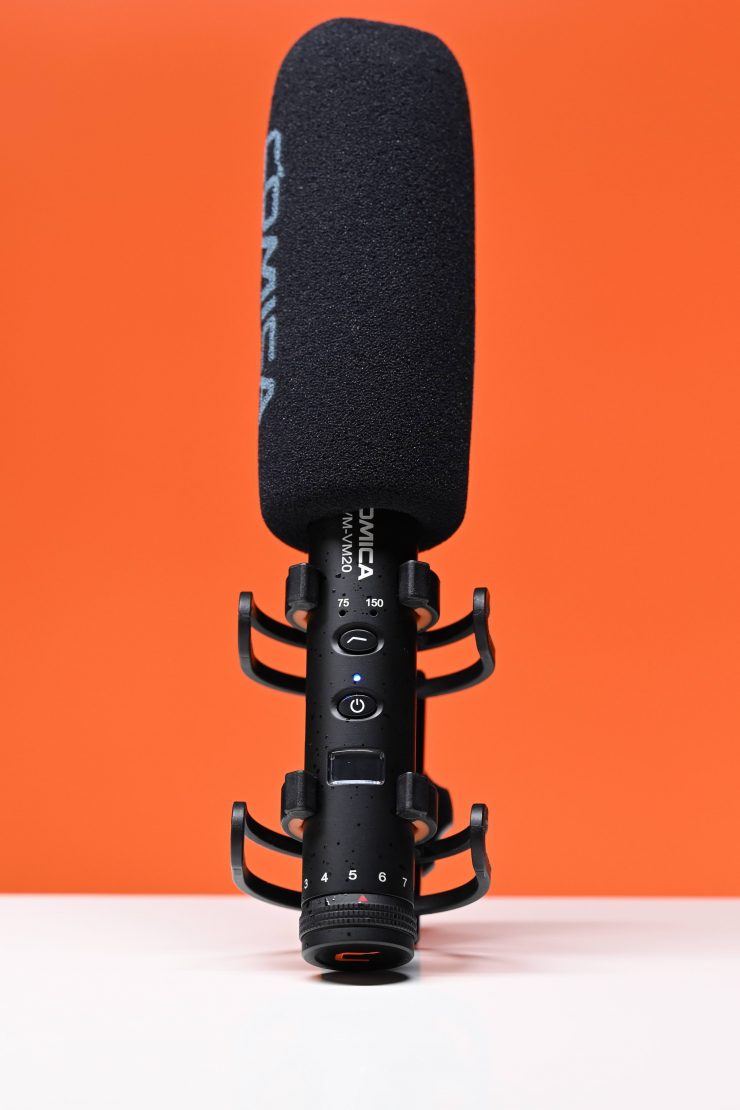
The CVM-VM20 is a solid offering that can be used for a lot of different applications. The build quality is decent and the microphone looks like it would survive the rigors of field use.
The microphone sounds decent enough and it is nice that you can output a signal to something like a RØDE Wireless GO. The biggest problem I have with the microphone is the inability to use it as a USB microphone and the fact that you can’t record a second track at a lower level than your main track. In saying that, those features that are found in the RØDE VideoMic NTG do come at significantly more cost.
At its price, the Comica CVM-VM20 is more affordable than the RØDE VideoMic NTG and DEITY D3 Pro, but it does lack some of their features. As an entry-level shotgun microphone that is reasonably versatile, it does do a decent job and it is worth looking at if your budget can only stretch so far.

